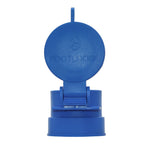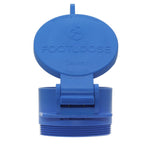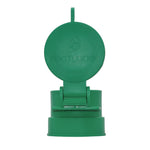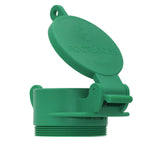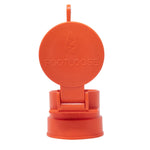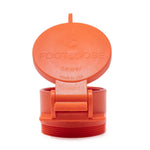You have no items in your shopping cart.
A sewer line problem is one of homeowners’ worst nightmares. A sewer system with extensive damage is not only costly to repair but can also cause problems, such as backed-up sewage, burst pipes, or a flooded basement.
Sewer damages can also lead to long-term issues. For instance, leaks can cause mold to grow in your house and damage the foundation. Meanwhile, they may attract pests such as rats and cockroaches into the home.
The best way to prevent such headaches is to catch sewer line issues early. By learning about the various signs that indicate you need a sewer line repair, you can prevent costly damage down the road.
What’s a Sewer Line?
A sewer line is a plumbing line that collects and directs all the wastewater from toilets, tubs, and sinks out of your home and into the city’s sewer system. Sometimes called the main sewer line or mainline, it transports wastewater from your home to treatment plants where it’s cleaned and returned to the environment.
A sewer line is made up of a network of pipes, pumps, valves, chambers, and manholes, and its complexity is not to be underestimated. A clog or leak in one component could create a ripple effect that affects the entire system.
Signs That Indicate Sewer Line Repair Is Required
Here are some signs that indicate you may need a sewer replacement:
- Clogs in multiple places such as sinks, toilets, and bathtubs—for example, the toilet won’t flush properly, or drainage is slow.
- Interactions between appliances that aren’t supposed to be connected. For example, the toilet backs up when the dishwasher is running.
- High water bills and low water pressure, which often indicates there’s a leak in the system.
- Foul odors and pools of septic water starting to appear inside and outside the house.
- Loud gurgling sounds from the plumbing, which often indicates that a clog is trapping air in the pipes.
- Lush patches of grass in your lawn can mean sewage (which is a great fertilizer) is leaking.
How to Identify Sewer Line Issues
If you see any of the signs listed above, seek the help of a plumbing professional who can help you identify sewage line issues and take the proper actions.
The best method to figure out the cause is a video inspection. A small camera is attached to a long probe, which is threaded through the sewer line to find out where the problem is and what is causing it. This allows you to save time and money by identifying the best solution right away.
Common Types of Sewage Problems
Here are some common sewage problems you may encounter:
- Broken, collapsed, cracked, or misaligned pipes, which can be caused by shifting soil or frozen ground.
- Blockages, often caused by grease or other objects restricting proper water flow.
- Pipe corrosion or deterioration, which is more common in older pipes that aren’t made of PVC.
- Bellied pipe, which happens when waste pools form in a section that has sunken into the ground.
- Leaking joints caused by broken seals between pipes.
- Tree roots, which infiltrate the sewer line and can cause extensive damage in a short time.
What’s Involved in a Sewer Pipe Replacement?

Even if you’re a handy person, inspecting and replacing a sewer line isn’t a good idea for a weekend DIY project. Many things can go wrong, and mistakes may cost you more money and expose your family to toxic sewage.
Here’s what you can expect when seeking the help of a plumbing professional and the different methods that can be used to conduct a sewer pipe repair.
First, your plumbing expert will determine where the clog is—most can be fixed by using the “trench method,” in which the plumber digs a hole in your yard above the sewer pipe to access the line. If a sewer line replacement is required, here are a few options:
- Tunneling: This involves digging a tunnel under the building. Then, the contractor will cut out the old pipes and hang new ones from the slab foundation. Poor air quality and collapsing soil are two major safety concerns. Also, there could be long-term risks if the process compromises the soil under the foundation.
- Pipe section replacement: Your plumber will replace sewer pipes one section at a time. The floor above the old section is broken up with a sledgehammer. Then, the old line is cut out, and a new pipe is put in. This method can be messy, disruptive to your home, and time-consuming. You’ll also have to bear the cost of repairing the floor above the pipe.
- Pipelining: This no-dig solution uses a PVC pipe known as the liner, which is placed inside the old piping. Then, the space between the old pipe and the new liner is filled with epoxy, a watertight sealant. This procedure can be completed with minimal disruption to the property and carries fewer risks than traditional methods.
How Much Does Sewer Line Replacement Cost?
The cost of replacing or repairing a sewer line typically ranges from $1,100 to $4,100, with an average of $2,500.
Many factors can affect the cost of sewer line repair, including pipe materials, accessibility, repair method, the extent of the repair, and cleanup. Here are some examples:
- If extensive excavation isn’t required, the service typically costs $60 to $250 per foot. If you need to replace or repair a sewer line under a slab, expect to pay $150 to $200 per foot.
- Replacing a sewer line can cost anywhere between $3,000 to $25,000. Meanwhile, a repair often comes out to $1,000 to $3,000 (excluding cleaning).
- It typically costs $50 to $250 per foot to replace a collapsed sewer line, $100 to $600 to remove tree roots (before the cost of repairing the line), $50 to $250 per foot for cracked sewer pipe repair, and $200 to $300 to clean out a clog.
The best way to avoid the high cost of sewer line repair or replacement is to keep your sewer pipes in good working condition. Find a reliable plumbing specialist in your area who can regularly perform preventative maintenance on your pipes and septic system to keep everything working smoothly.



